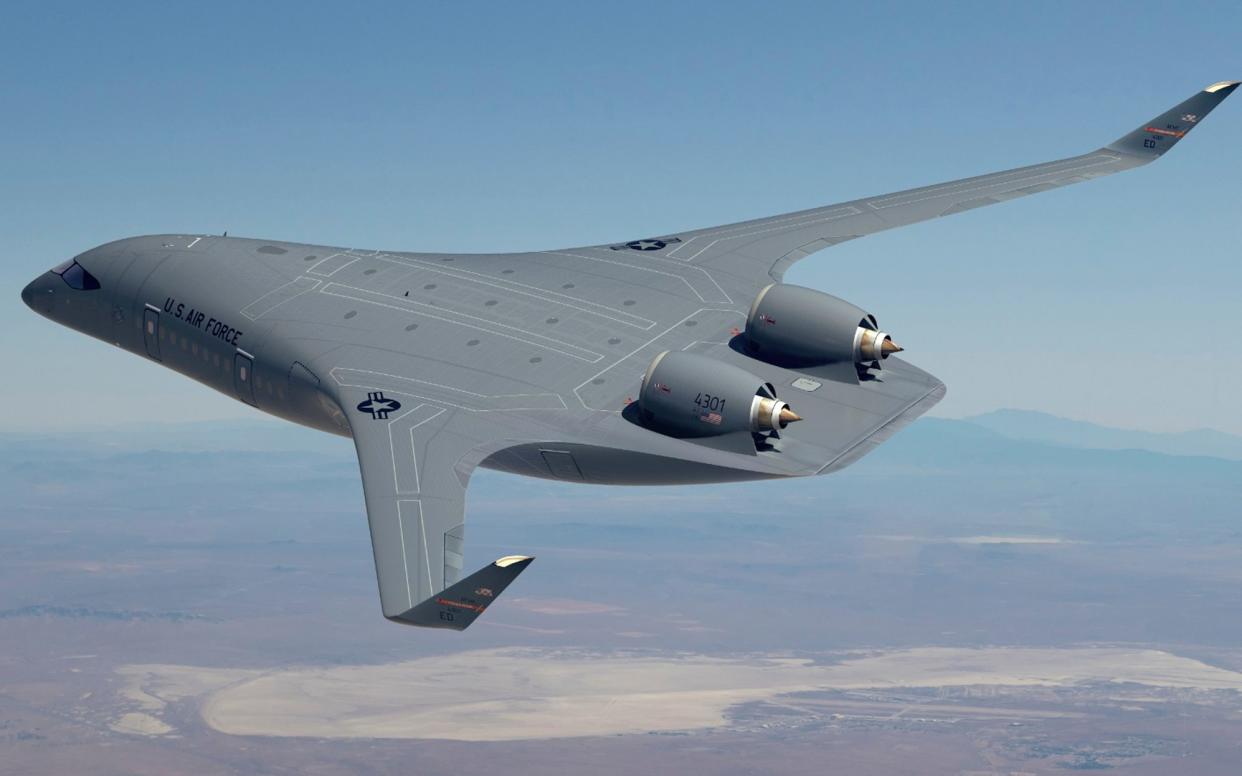US Air Force splashes out on futuristic jet that blends long distance with fuel saving

The United States Air Force will invest $235 million (£184 million) to help a start-up manufacturer build a jet with a blended-wing body that officials say could provide a greater range for military tankers and cargo planes – and become the newest carrier of airline passengers.
JetZero and the Air Force, which announced the award on Wednesday, say they hope that the full-size demonstrator plane will be ready to fly in 2027.
Most large aeroplanes are tubes with wings and a tail section attached. Blended-wing planes are designed with the body and wings being one piece.
The result is a sleek, futuristic-looking aircraft with less aerodynamic drag than a conventional plane of the same size.
JetZero officials argue that traditional planes are running out of ways to improve fuel efficiency. With fuel prices likely to rise, an entirely new design is needed to reduce fuel consumption and emissions.
The Air Force, the Pentagon’s defence innovation unit and Nasa are working on the project. JetZero, based in Los Angeles, has a partner in defence contractor Northrop Grumman.
‘Thirsty for solutions’
The idea of a blended-wing body is not new.
Boeing built and tested reduced-scale samples of its X-48.
Lockheed Martin, an aerospace and defence company, has tested a hybrid wing body design in wind tunnels.
The Air Force said technological advancements in materials and manufacturing have made the production of larger-scale demonstrators possible.
At a briefing on Wednesday, officials said the JetZero demonstrator could determine whether a blended-wing body could be used in future refuelling tankers and cargo planes for the Air Force.
They said passenger and cargo airlines could benefit if the design adds seating or cargo space and reduces fuel costs.
Tom O’Leary, the chief executive and co-founder of JetZero, said: “The commercial industry is thirsty for solutions that aren’t so thirsty for fuel.”
Mr O’Leary acknowledged that the Air Force award will not be enough to cover the development and production of even a single full-scale prototype. He gave few details on the company’s funding.
“While our total funding is not public, we will be having private investment and partners contributing to that,” he said.
